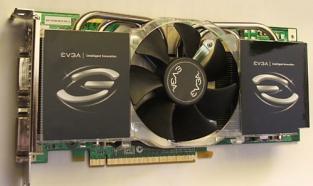AMD RS690 CHIPSET REVIEW X1250 PERFORMANCE VS NVIDIA GEFORCE 6150
![]()
|
|
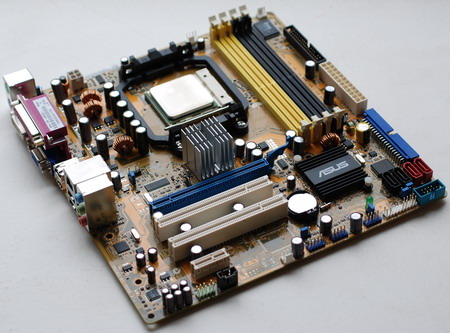 |
||||||||||||||||||
| Posted:2007-03-07 By chipset review Number of View:95833 |
|||||||||||||||||||
By :chipset review Posted:2007-03-07
Since the purchase of ATI by AMD, the chipset activity of Canadian company was null . .The chipset RS690 which interests us today is thus the result of long work with integrated graphic solution since ATI (when it was a single company) planned the release of this chipset already in 2006. This will allow AMD to gain the heart of PC multimedia a field where INTEL largely remains in advances with its Centrino platform. Delayed many time, the RS690 is finally released. To affirm its multi-media capability this chipset support the graphic interface Aero Windows Vista.  AMD RS690: two version !AMD has two RS690 versions. The first, will occupy the large part of this review, this is RS690G with Radeon X1250. It benefits from all possible and conceivable refinements with in particular HDMI and DVI. The second has similar name RS690V with Radeon X1200. More modest, is the second alternative of RS690 witch is deprived from DVI and HDMI. AMD RS690G: traditional architecture
Chipset RS690G seen by Windows XP and CPU-Z The southbridge is also traditional, equipping chipset RS690V or RS690G is SB600 developed by ATI. It integrates of course a controller USB 2.0 with the possibility of managing ten ports as well as controller PCI standard 2.3. This last can manage a total of six ports whereas AMD proposes to us a controller Serial-ATA 3 GB/S NCQ compatible . The RAID function has some modes : RAID 0, RAID 1, RAID 10 and RAID 5. Small disappointment on the other hand, SB600 manages only four connectors Serial-ATA . From other side , AMD offers an AHCI. This southbridge has also one controller IDE 133. Finally we note that contrary to nForce, southbridge AMD SB600 does not integrate any network controller . 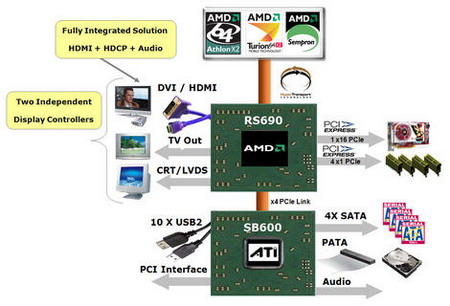 Diagram of the interconnections of the RS690G A word to finish on the driver whose installation is a formality. It should be noted that only SMBus pilot is necessary to correct operation in Windows XP, AMD have the good idea to not provide any driver IDE or SATA to replace Microsoft one witch are installed by default . The SMBus driver is automatically installed by graphic driver Catalyst delivered with the motherboards RS690G . AMD RS690G: Radeon X1250 Details …
 Radeon X1250 Catalyst 7.2 Presented like Radeon X700, the RS690G is not a simple copy. There are some differences on the level of graphic capacities in these chips. Most significant comes the fact that Radeon X1250 benefits from engine AVIVO, a supposed engine to improve video quality by executing certain tasks like 3:2 Pull down or by proposing 10 bits . AVIVO also contains a supposed acceleration to the main frame at time of decoding certain video (MPEG 2, H.264, etc). But here format VC-1 is not supported and considering the modest performances of RS690G, we will not count on acceleration of video high-definition in 1080p. .....  Avivo seen by PowerDVD 7.3 The first chipset with graphic solution, RS690G benefits from native DVI and HDMI ! AMD supports here HDMI version 1.3 and HDCP in version 1.1. Combined with Realtek driver, the chipset also offers audio out in HDMI. we note that ATI offers two true independent outpu (analogue+numeric or numeric+numeric), which allow to benefit from clone or wide, whereas the Dual-Link DVI is supported! It is a good point, because GeForce 6150 NVIDIA does not have such future . Radeon X1250 has also a coder TV integrated from Xilleon chips AMD. integrated graphic solution ATI Radeon X1250 proposes the function Surround View which allow to connect up to three screens on the same system with graphics card Radeon PCI-Express . Finally, with regards to the electric consumption, the smoothness of 80nm allow AMD to propose more economic than GeForce 6150 NVIDIA. The table below show the state of total electric consumption of our two test systems running 3DMark 06 in 1280x1024:
MSI K9AGM2
Motherboard MSI K9AGM2 MSI K9AGM2 offers four ports USB 2.0, two ports PS/2, a FireWire connector as well as a connector network RJ45. MSI has here the good idea to propose HDMI to us but the manufacturer is satisfied to supplement it by VGA DB15. No connector DVI is thus offered by this motherboard . Curiously, MSI engineers propose to us (in its place?) a parallel, however completely obsolete port in our days. MSI K9AGM2 has also six audio connectors with format mini-jack, connector SPDIF, the K9AGM2 does not have any optical output.
K9AGM2 MSI Details
Asus m2 A-VM
motherboard Asus m2 A-VM As regards to external connector , Asus proposes two ports PS/2 , a parallel port , four connectors USB 2.0, RJ45 for network and three connectors audio mini-jack. From the start, we notes the absence of integrated FireWire or the absence of audio out numerical . Asus proposes to us as a compensation, a port VGA DB15 and connector DVI-D. No connector HDMI is present on the motherboard .
Asus m2 A-VM Details
3DMark 06 - v1.1.0 - CPU
PCMark 05 - v1.2.0 - CPULet us now pass to processor test with PCMark, another tool for synthetic test from FutureMark. Here the RS690G is found on the last place , the systems based on GeForce 6100 and GeForce 6150 being slightly faster. The variation is negligible between RS690G and GeForce 6150: lets say hardly 0,7%! PCMark 05 - v1.2.0 - MemoryThe PCMark 05 memory test show even worse result with RS690G. This one was penalized by BIOS asus m2 A-VM which does not allow to regulate the advanced memory setting . In fact, two systems with NVIDIA show quite higher performances than with RS690G. Sandra Xi - SP1 - Processor
The processor test from Sandra, does not show any significant difference in performance between our three platforms. All are on the same level. Sandra Xi - SP1 - Memory
Cinebench 9.5
Windows Media Encoder 9.0Under Windows Media Encoder we measure time necessary to each one of our systems to compress with WMV video with origin format AVI. The results is expressed in second the lower is better. There is small difference between all tested chipset the GeForce 6150 still the leader and execute this test faster by 6second than AMD RS69g WinRar 3.62With WinRAR, we measure time necessary to compress a little more than 650 MB of data. There the results are expressed in second . the Platform RS690G is the slowest here, whereas GeForce 6150 again take the first place . Between the two systems the variation reaches eight seconds. ScienceMark 2.0For ScienceMark, software measuring the aptitudes in mathematical calculation of our various system, the RS690G is almost in perfect equality with GeForce 6100. GeForce 6150 is able to be detached with higher performances 2,5%. And here this variation could not be justified by memory subsystem performances . the nvidia 6150 has higher cpu performance Doom 3 - v1.3 - 1024x768x32
( why the Asus BIOS still under development and do not allow us to regulate all setting ??? :-( ). Far Cry - v1.4 - 1024x768x32
Know we will pass to the integrated video test. 3DMark 06 - v1.1.0Doom 3 - v1.3Doom 3 show Radeon X1250 faster than GeForce 6150. This last in general is hardly better than GeForce 6100. In 1024x768, the x1250 from AMD is 27% faster than GeForce 6150. The variation is impressive but Doom 3 in any case in not playable on GeForce 6150 as on Radeon X1250. Radeon X1300 Only , a true graphics card, allow to play here in 1280x1024, Radeon X1300 is more than three times faster than Radeon X1250… Half-Life 2 Lost CoastHalf-Life 2 Lost Coast remains logically in favor of X1300 which always seems a lot better than integrated graphic solution. In 1280x1024, Radeon X1300 is more than 2,5 times faster than Radeon X1250… This last asserts performances higher than GeForce 6150 with a profit of 41% in 1280x1024. But as previous benchmark this profit do not allow to play the game in 1024x768 resolution … Far Cry v1.4
AVIVOTo finish this tests series , we wished to measure the impact of hardware acceleration AVIVO with Radeon X1250 on the performances of our processor, the Athlon 64 X2 5200+. For that we use version 7.3 PowerDVD, Cyberlink software , and a flow MPEG2 HD extracted from Batman Returns in 720p with bit-rate 12Mbps. We launch the file for several minutes and during we measure the processor usage in performances console of Windows XP. The operation is repeated with identical test on platform GeForce 6150 which proposes acceleration PureVideo HD. 
The results are pretty low, whereas PureVideo seems to reduced CPU usage by 3%, Avivo seems completely inoperative with processor usage of 33%! However the software PowerDVD 7.3 offers a good hardware acceleration Conclusion
Arrived at the end of this review, it is necessary for us now to draw conclusion about RS690G, the first chipset with integrated graphic solution from AMD. Technically, RS690G is posted like a good platform vs GeForce 6100 and GeForce 6150, its most direct competitors. Rather powerful and relatively functional. we should note that AMD has support to AHCI and RAID 10, two functions which are missing with controller Serial-ATA in nForce 430.
we would be happy to answer for your question . if you have suggestion or comment
regarding this review our support would be glad to help just join our forum and ask u will get the best answer
to discuss check our forum section :-) RATE THIS REVIEW | |||||||||||||||||||
![]()

Amd RS690 chipset review x1250 performance vs nvidia geforce 6150
Amd RS690 chipset review x1250 performance vs nvidia geforce 6150


7600gt review
7600gt is the middle card range.
We already benchmarked this video card and found that ...

 geforce 8800gtx and 8800gts
geforce 8800gtx and 8800gts  Xtreview software download Section
Xtreview software download Section  AMD TURION 64 X2 REVIEW
AMD TURION 64 X2 REVIEW  INTEL PENTIUM D 920 , INTEL PENTIUM D 930
INTEL PENTIUM D 920 , INTEL PENTIUM D 930  6800XT REVIEW
6800XT REVIEW  computer hardware REVIEW
computer hardware REVIEW  INTEL CONROE CORE DUO 2 REVIEW VS AMD AM2
INTEL CONROE CORE DUO 2 REVIEW VS AMD AM2  INTEL PENTIUM D 805 INTEL D805
INTEL PENTIUM D 805 INTEL D805  Free desktop wallpaper
Free desktop wallpaper  online fighting game
online fighting game  Xtreview price comparison center
Xtreview price comparison center 

- The new version of GPU-Z finally kills the belief in the miracle of Vega transformation
- The motherboard manufacturer confirms the characteristics of the processors Coffee Lake
- We are looking for copper coolers on NVIDIA Volta computing accelerators
- Unofficially about Intels plans to release 300-series chipset
- The Japanese representation of AMD offered monetary compensation to the first buyers of Ryzen Threadripper
- This year will not be released more than 45 million motherboards
- TSMC denies the presentation of charges from the antimonopoly authorities
- Radeon RX Vega 64 at frequencies 1802-1000 MHz updated the record GPUPI 1B
- AMD itself would like to believe that mobile processors Ryzen have already been released
- AMD Vega 20 will find application in accelerating computations
- Pre-orders for new iPhone start next week
- Radeon RX Vega 57, 58 and 59: the wonders of transformation
- ASML starts commercial delivery of EUV-scanners
- The older Skylake processors with a free multiplier are removed from production
- Meizu will release Android-smartphone based on Helio P40
- AMD Bristol Ridge processors are also available in American retail
- The fate of Toshiba Memory can be solved to the next environment
- duo GeForce GTX 1080 Ti in GPUPI 1B at frequencies of 2480-10320 MHz
- New Kentsfield overclocking record up to 5204 MHz
- Lenovo released Android-smartphone K8



computer news computer parts review Old Forum Downloads New Forum Login Join Articles terms Hardware blog Sitemap Get Freebies
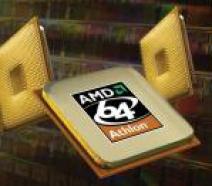

 RS690G, has architecture with doubles chip : northbridge and southbridge. Let us recall that the presence of memory controller in processors Athlon 64 allow for example NVIDIA to propose chipsets with single chip. But let us return to the northbridge in RS690G which, does not integrate a controller controller but benefits of course from graphic core . made in 80nm by UMC, the northbridge is traditional, it has HyperTransport for communication with processor as well as controller PCI-Express . This last can manage 24 lines, of which 16 are reserved for an optional graphics card and 4 for connectors PCI-Express 1x . And here remain four lines PCI-Express available which are used by interconnection ADLINK between northbridge and its southbridge.
RS690G, has architecture with doubles chip : northbridge and southbridge. Let us recall that the presence of memory controller in processors Athlon 64 allow for example NVIDIA to propose chipsets with single chip. But let us return to the northbridge in RS690G which, does not integrate a controller controller but benefits of course from graphic core . made in 80nm by UMC, the northbridge is traditional, it has HyperTransport for communication with processor as well as controller PCI-Express . This last can manage 24 lines, of which 16 are reserved for an optional graphics card and 4 for connectors PCI-Express 1x . And here remain four lines PCI-Express available which are used by interconnection ADLINK between northbridge and its southbridge.
 ATI/AMD indeed recycles with RS690G the architecture of its Radeon X700, a graphics chip medium range witch was released in September 2004 and at in this time it was known under code name RV410.
ATI/AMD indeed recycles with RS690G the architecture of its Radeon X700, a graphics chip medium range witch was released in September 2004 and at in this time it was known under code name RV410.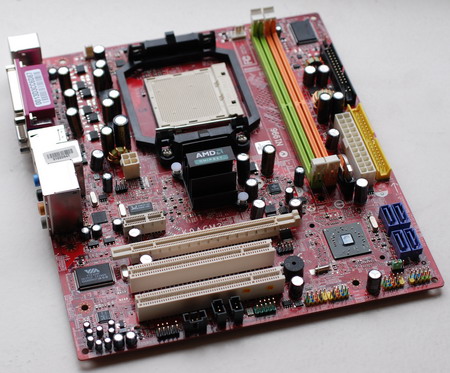



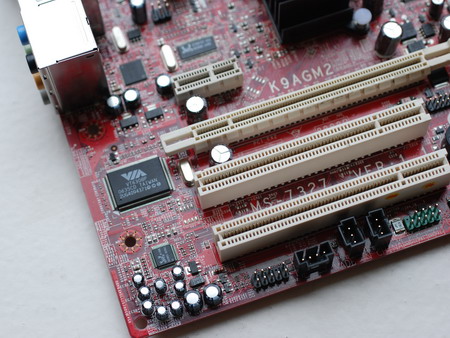



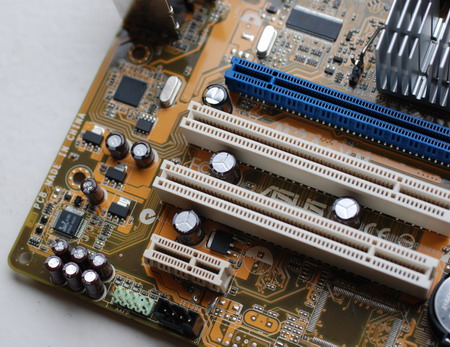
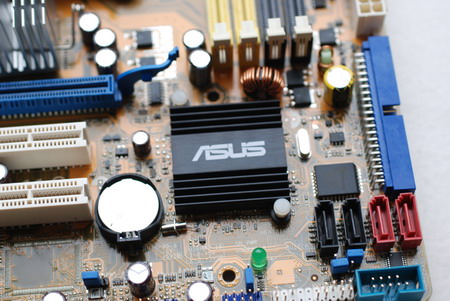

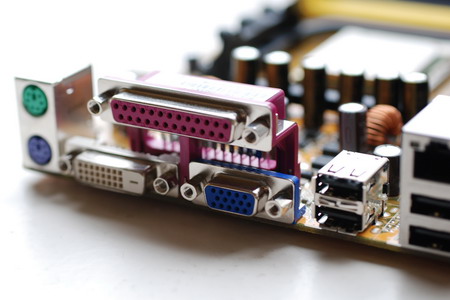
 MSI with Asus, are the first manufacturers to propose motherboard based on chipset AMD RS690G with Radeon X1250. With the format ATX, the motherboard adopts a red PCB and socket AM2.
MSI with Asus, are the first manufacturers to propose motherboard based on chipset AMD RS690G with Radeon X1250. With the format ATX, the motherboard adopts a red PCB and socket AM2. 
